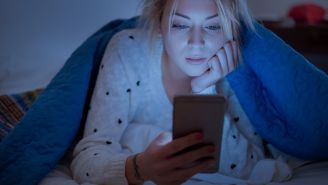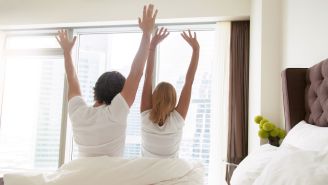Excessive daytime sleepiness (EDS) refers to difficulty staying alert, staying awake, or resisting the urge to sleep during daytime waking hours. It can be caused by many health conditions and circumstances, including sleep disorders.
Here are four key facts to help understand EDS.
EDS makes it difficult to live a normal life
While everyone is going to have days—or weeks—where they feel tired, want to take a nap, or feel the need for more sleep than normal, EDS is different. For someone experiencing EDS, symptoms are a daily or almost-daily occurrence and persist for long periods of time.
EDS can make it difficult to live a normal life—go to work, keep up with errands and chores, maintain relationships, pursue interests and hobbies. EDS also puts a person at risk for accidents and injuries, including motor vehicle crashes.
Sleep disorders can cause EDS
EDS is often the first symptom of a sleep disorder called narcolepsy. People who have narcolepsy experience disrupted sleep cycles. This can lead to fragmented sleep during the nighttime and “sleep attacks” during the day, where a person can fall asleep suddenly for a few seconds or a few minutes. People with narcolepsy may also experience sudden loss of muscle control (cataplexy), sleep paralysis, and hallucinations.
For another example, EDS is also associated with obstructive sleep apnea (OSA). Sleep apneas refer to disorders where a person stops breathing during sleep for brief periods of time. OSA is the most common type and occurs when the throat muscles relax during sleep, blocking the airways and stopping a person from breathing. This can occur multiple times an hour during the night, causing fragmented, unrestful sleep.
EDS is also associated with other types of sleep apnea and other sleep disorders, including idiopathic hypersomnia, restless leg syndrome, periodic limb movement, and insomnia.
Many other factors can contribute to EDS
Mental health disorders, certain medications, diabetes, thyroid problems, electrolyte imbalances, and shift work (jobs that require working during the hours when you would normally sleep) can all contribute to EDS. Sleep deprivation, stress, anxiety, and boredom can also contribute.
EDS can be treated
If you are experiencing EDS, talk to a healthcare provider. Treatment will depend on the underlying cause (or causes) of EDS.
For example, narcolepsy is typically managed with medication, but the type of medication will depend on a person’s symptoms. One person may only need a wakefulness-promoting medication to address EDS. Another person may require a medication that acts on the central nervous system, to address EDS and cataplexy (sudden loss of muscle control). Antidepressants are sometimes used when someone experiences sleep paralysis and hallucinations in addition to other narcolepsy symptoms.
For obstructive sleep apnea, the standard treatment is a CPAP device. CPAP stands for “continuous positive airway pressure.” The device is a breathing apparatus that is worn over the nose or mouth during sleep. Positive airway pressure prevents the throat from closing.
Medications that promote wakefulness can also be prescribed to manage EDS that occurs as a result of obstructive sleep apnea.







